To Kill a Mockingbird by Harper Lee is a staple in English literature classes because it’s a great way to learn about literary concepts while gaining insight about certain aspects of American history. The novel is set in the racially divided American South during the 1930s and uses that context to explore morality, justice, and humanity, especially through the eyes of a child. Students can begin to learn more about history and think about deeper philosophical, societal, and psychological questions from a low-stakes standpoint with this compelling novel.

Historical Context of To Kill a Mockingbird
Harper Lee wrote To Kill a Mockingbird during a period of deep racial tension in the United States. Published in 1960, the novel appeared at the height of the Civil Rights Movement, when segregation and discrimination were being openly challenged.
Lee grew up in Monroeville, Alabama, where she witnessed firsthand racial injustices just like the ones in her story. Crucially, Lee was a white author, which meant that other white folks at the time might listen more seriously to what she had to say.
To Kill a Mockingbird is both a historical fiction and a Southern Gothic novel. It presents realistic events and characters of the 1930s American South while exploring Gothic themes such as moral decay, fear, and social injustice through the motifs of racism, poverty, and the flaws of human nature.
The novel was meant to inspire readers to reflect on their society critically. It asked Americans to confront the racism and inequality in their neighborhoods.
Over the years, To Kill a Mockingbird has been banned in some schools for its use of racial slurs and its portrayal of prejudice. But banning the book misses the point: the only way to learn that these things were and are wrong is to be taught about them. The novel’s value lies in sparking honest discussion about justice, empathy, and history.
Timeline Leading Up to the Events in To Kill a Mockingbird
One of the most important things to understand about the novel is the historical foundation leading up to the events of the book, as well as the significance of its publication. Here’s a quick refresh of the social and political landscape that informed Harper Lee’s life and writings.
1865
13th Amendment Passed
In theory, slavery in the United States was abolished.
1870
The Jim Crow Era Begins
Virginia passes a segregation law forbidding Black and white children from attending the same schools, kick-starting many years of discriminatory laws across the country.
1882-1951
At least 3,438 Black people are lynched during this time
According to data from the Tuskegee Institute. This provides harrowing context for the struggle of Black Americans.
1875
The Civil Rights Act of 1875 Passed
It prohibits segregation and discrimination in public places.
1883
The Civil Rights Act of 1875 Repealed
It's determined that individuals should be allowed to discriminate as they see fit (however, states were not allowed to do so).
1896
Plessy v. Ferguson
Establishes that racial segregation is legal.
1929
The Great Depression Begins
Everyone struggles even more.
1933-1936
Setting of "To Kill a Mockingbird"
1950s
Height of Jim Crow
Many discriminatory laws are passed, including ones aimed at banning miscegenation (interracial relationships).
1954
The Civil Rights Movement Begins
Brown v. Board of Education finds “separate but equal” is unconstitutional and orders schools to integrate students.
Mid 1950s
Harper Lee starts writing her novel
1960
"To Kill a Mockingbird" is published
1963
The March on Washington
The march and Martin Luther King, Jr.’s “I Have a Dream Speech” take place.
1964-1968
Conclusion of this era of the Civil Rights Movement and Jim Crow
The Civil Rights Act of 1964, the Voting Rights Act of 1965, and the Fair Housing Act of 1968 are passed. Loving v. Virginia finds miscegenation laws unconstitutional.
You can see the long history of oppression against Black people in society that informed both the novel and the Civil Rights Movement. Harper Lee helped urge the American public to care about civil rights and have a more empathetic and understanding view of the struggle that Black Americans had been dealing with for generations. Though her book was just one drop in the ocean of the entire Civil Rights Movement, it’s important to remember that the ocean is made up of millions of drops.
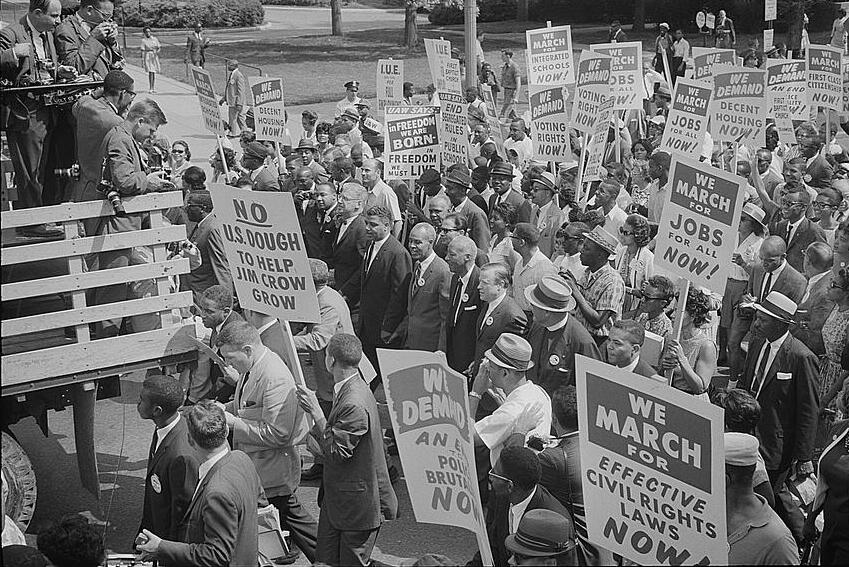
Plot Summary
To Kill a Mockingbird takes place in Maycomb, Alabama, a fictional small, slow-moving town based on the one Harper Lee grew up in. The townsfolk are close-knit, but there are clear divides between the white and Black inhabitants.
Scout Finch, the narrator, recounts her childhood and the events that taught her about justice and human nature.
Scout, 6, lives with her father, Atticus Finch, and her older brother, Jem. Their mother has passed away, and Calpurnia, their Black housekeeper, helps raise them. Scout, Jem, and their friend Dill, who only visits in the summer, find themselves fascinated by Boo Radley, the mysterious neighbor who never goes outside. The children try to get Boo Radley to come out, but to no avail. However, they do find gifts left for them on the property, presumably from Mr. Radley, who must place them when nobody is watching.
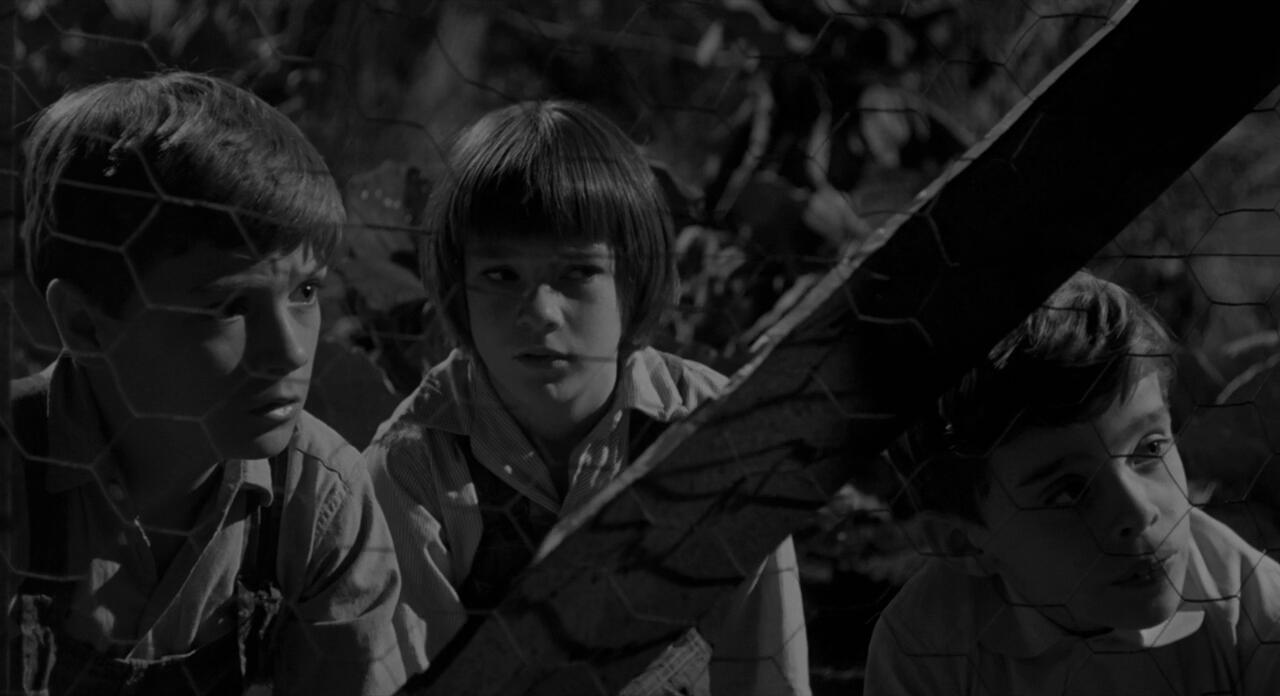
Over the course of the book, which takes place over 3 years, Atticus urges the children to learn to sympathize with Boo Radley, rather than speculate unfairly about him.
The main story centers on Atticus Finch’s decision to defend Tom Robinson, a Black man falsely accused of raping a white woman, Mayella Ewell. Atticus knows the case is nearly unwinnable because of the town’s racial bias, but he chooses to stand for justice anyway.
As the trial unfolds, Scout and Jem witness how fear, ignorance, and prejudice can destroy lives. They are subjected to harsh treatment from the other children in town for their father’s actions.
The day before the trial, a mob descends on the jailhouse: the racist white folks in town intend to lynch Tom before he can testify. Atticus intercepts them, but it’s Scout’s innocent questioning that ultimately makes the mob disperse.
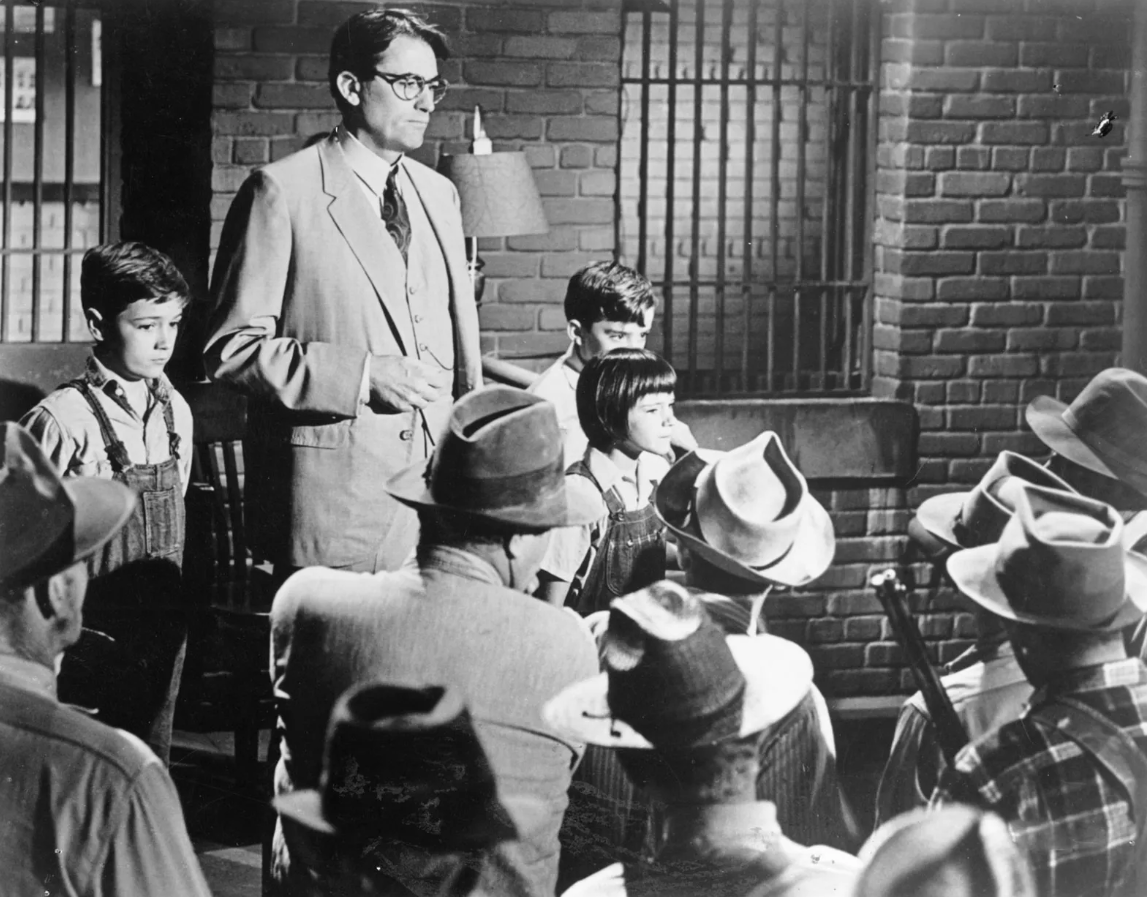
In the trial, Atticus reveals evidence that Mayella approached Tom, but when she was discovered by her father, she claimed Tom assaulted her, both to “save face” in the community and to appease her abusive father. Despite the compelling evidence, Tom is declared guilty by the all-white jury. When Tom attempts to escape, he is shot and killed.
The children are badly shaken by the events, and Jem becomes despondent. Meanwhile, Mr. Ewell feels insulted by Atticus’s claims at the trial and attacks the children with a knife while they’re out trick-or-treating. Boo Radley finally emerges to intervene and save the kids. Jem is injured, and Bob Ewell is killed. The Sheriff decides that Bob fell on his own knife, saving both Jem and Boo from potential legal trouble.
Finally, Scout can talk to Boo Radley. But after the encounter, he re-enters his home and is never seen again. By the end of the novel, Scout understands that people are often misunderstood because others fail to see the world from their perspective. She also resolves to remain empathetic and kind, and not let horrible events like the ones she’s experienced make her disillusioned and cynical.
Animal Farm is a novel that also explores themes like corruption and inequality.

To Kill a Mockingbird Character Analysis
The characters in To Kill a Mockingbird are partly based on real people. Harper Lee used that inspiration to craft examples of different attitudes and viewpoints that were conducive to her story and message. It’s important to remember, however, that the characters and story are not biographical; they simply have lots of real-life elements within them.
Scout Finch
Jean Louise “Scout” Finch serves as both the narrator and protagonist. Since she is a young child, her innocent and honest view of the world cuts through the politics that the older characters (and even us, the audience) are aware of. She is tomboyish, curious, and outspoken with a propensity to judge.
She notices the world around her well, seeing the injustices in her community even though she doesn’t understand them. She grows from a child who sees the world in simple terms to someone who recognizes its moral complexity (as much as a 9-year-old can).
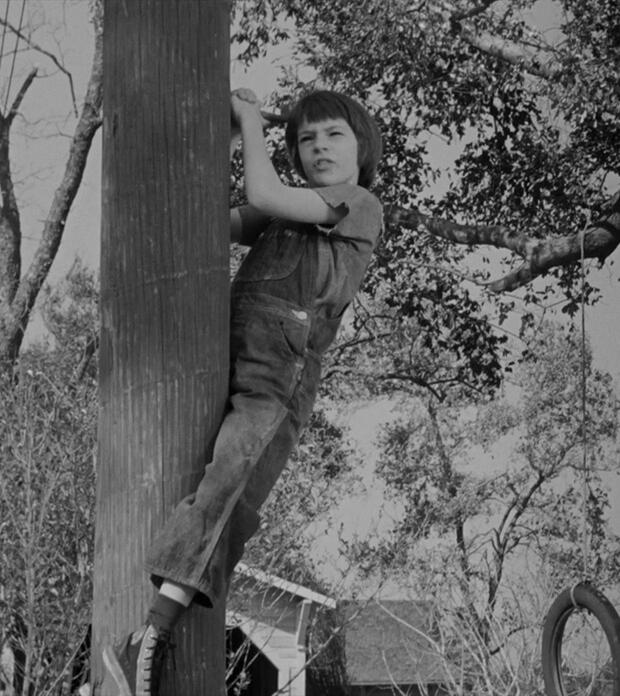
Scout demonstrates to readers several pointed things about society, specifically about racism and prejudice.
Scout, with her judgmental side, could have easily fallen in line with the rest of the racist community, but she was taught to try to view life from others’ perspectives and be sympathetic.
Her father, Atticus, teaches her to look beyond appearances and understand people’s motives.
When he says, “You never really understand a person until you consider things from his point of view,” Scout learns that empathy requires effort and patience. When she stands on Boo’s porch and imagines the world from his perspective at the end of the story, it’s meant as a demonstration for readers to do the same.
Scout is loosely based on Harper Lee herself. Finch is her mother’s maiden name, so using the name “Finch” is a nod to the fact that many elements in the story come from Lee’s life.
For more reading about the dangers of falling in line, read Fahrenheit 451.
Harper Lee’s father, Amasa Coleman Lee, was the son of a Confederate soldier and distantly related to Robert E. Lee. It’s all the more interesting, then, that Amasa would advocate for two Black men in court and later support civil rights, and Harper would go on to champion civil rights with her writing!
Atticus Finch
Atticus Finch is the moral director of the novel. He is a lawyer, a single father, and a man guided by principle over conformity. His calm attitude is used to contrast with the anger and ignorance surrounding him. Atticus believes that justice should be fair to all, regardless of their status, and that courage often means doing what is right even when it’s clear you will lose.
Through his defense of Tom Robinson, Atticus teaches his children that morality is not about winning but about standing firm in what is right.
He remains dedicated to justice, even in the face of the angry community and their threats.
When the townsfolk criticize and threaten Atticus for defending a Black man, he doesn’t back down.
In the end, he is shown to be respectable and admirable, even though he loses the trial.
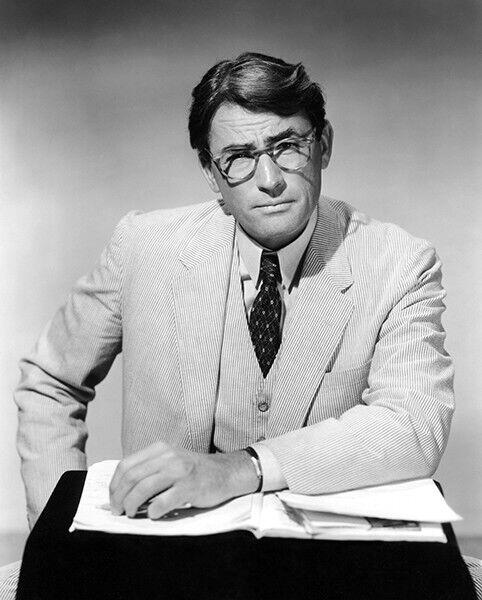
This demonstrates that just because you “fail” in your results, it doesn’t mean you have failed as a person. In fact, sticking to what's right and losing is better than morally bankrupting yourself and winning (or still losing anyway).
Atticus also teaches empathy not just through words but through example. His respect and understanding for others, including those who oppose him, show his deep belief in human dignity. He does not glorify violence or revenge, and he discourages his children from judging others hastily. His lessons about humility, understanding, and justice are used as a way to educate his children in the book, as well as readers in real life.
First of all, if you learn a simple trick, Scout, you’ll get along a lot better with all kinds of folks. You never really understand a person until you consider things from his point of view . . . until you climb into his skin and walk around in it.
Atticus
He is based on Lee’s real father, Amasa Coleman Lee, who was also an attorney. Tom Robinson’s case was partly inspired by a real case Amasa took on, where he defended two Black men in a murder trial. They were convicted and hanged. In his own life, he went from being a segregationist to advocating for civil rights, aptly mirroring the teachings of Atticus.
Jem Finch
Jem, Scout’s older brother, demonstrates a different type of growth in the novel. A bit older than Scout, he understands the situation more viscerally than she does at the time.
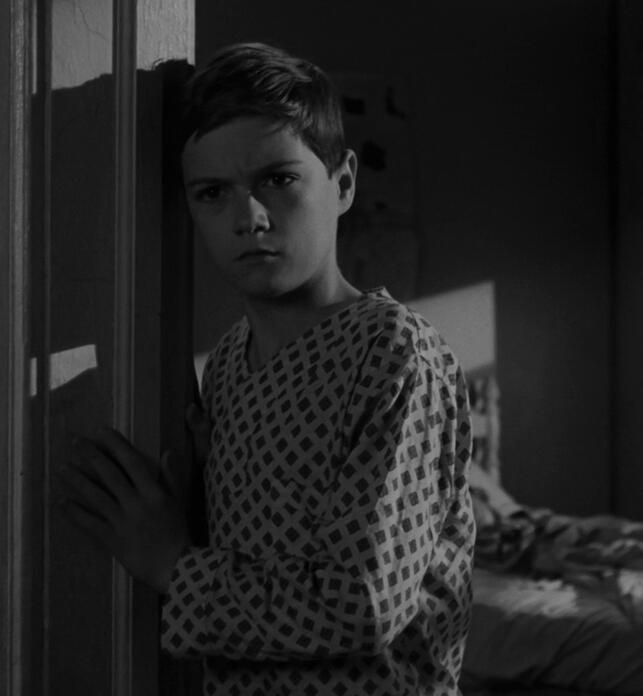
He starts as a playful, adventurous boy, but develops into a young man deeply affected by the injustice he witnesses.
The trial of Tom Robinson shatters his faith in the fairness of adults.
When the jury convicts Tom despite clear evidence of his innocence, Jem struggles to reconcile the world as it is with the values his father has taught him.
He becomes completely disillusioned.
Jem’s moral awakening is painful. He begins to see that courage and goodness do not always win. This realization makes him protective of Scout and more aware of the town’s flaws. However, he does not give in to despair or cynicism, he doesn’t decide to ignore it all, and he doesn’t adopt harmful views as a way to cope. He resolves to emulate his father by being empathetic and doing his best to protect others, setting an example for readers.
Tom Robinson
Tom Robinson represents both innocence and the cruelty of racial prejudice. A hardworking Black man and father, he becomes a victim of false accusation because of the color of his skin. His kindness toward Mayella Ewell (the white woman who accuses him) is twisted into evidence against him. He couldn’t have done anything right in the eyes of the prejudiced, racist society, highlighting the predicament many Black people were subjected to.
In the courtroom, his honesty and decency are undeniable. Even when there is evidence that Mayella and the Ewell family were making things up, it didn’t matter. The jury’s racism outweighs the truth.
Atticus had used every tool available to free men to save Tom Robinson, but in the secret courts of men’s hearts Atticus had no case. Tom was a dead man the minute Mayella Ewell opened her mouth and screamed.
Scout (about Atticus's abilities in the trial)
Tom’s conviction and death reveal the deep corruption of Maycomb’s justice system (and thus, the justice system in society at large). He is an example of the book’s central symbol: the mockingbird, a harmless creature destroyed for no reason. Like the bird, Tom is innocent yet punished by a society unwilling to see his humanity. His character forces both the reader and the children to recognize the devastating consequences of prejudice.
Another work that examines how the truth can be twisted is 1984 by George Orwell.
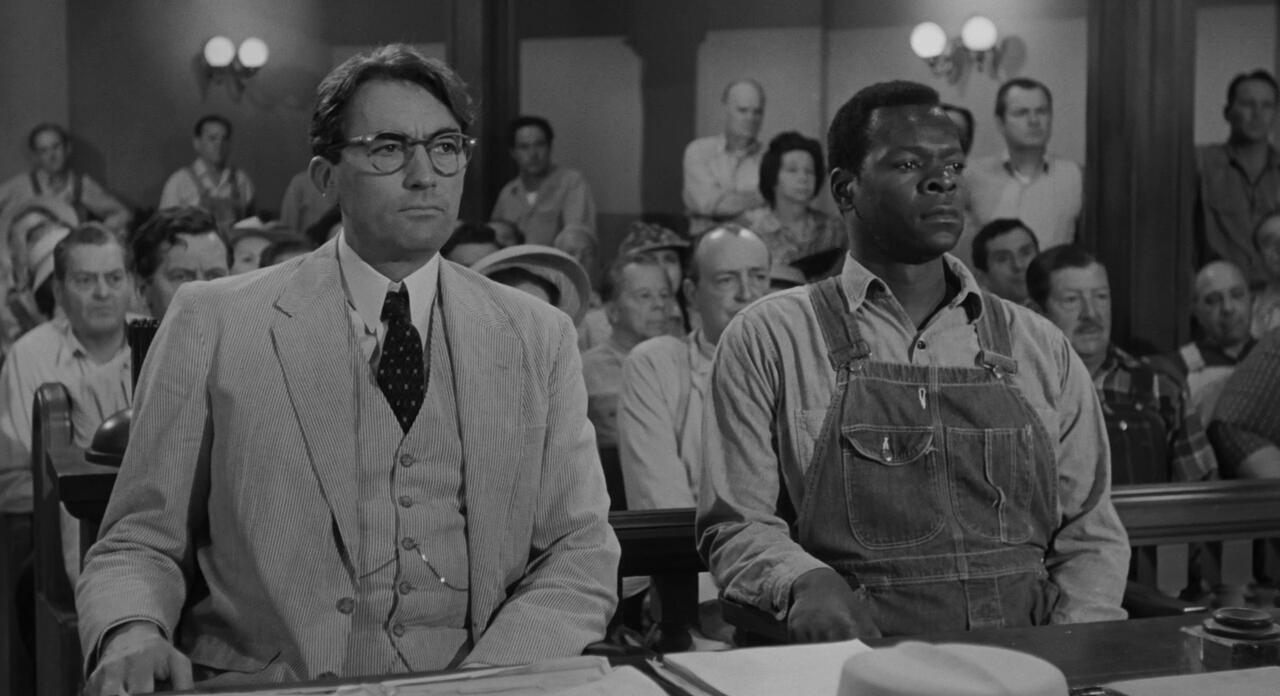
Boo Radley
Arthur “Boo” Radley is one of literature’s most misunderstood figures. At first, Boo is the subject of rumors that turn him into a sort of urban legend among the children. He is a mysterious neighbor who never leaves his house; the perfect fodder for kids to make up stories and speculations to scare each other with.
Scout, Jem, and their friend Dill imagine him as a ghostly figure. They are both fearful and fascinated by him. But, as the story progresses, Boo’s kindness and humanity are discovered. He also serves as the first subject for Scout and Jem to practice their sympathy, which allows them to handle the events better later on.
Will you take me home?
Boo Radley (His only spoken words in the entire novel)
Boo leaves gifts in the tree for the children, he covers Scout with a blanket during the fire, and he saves the children from the dangerous encounter with Bob Ewell. All these acts reveal his gentle and caring nature.
Then, we come to understand that his isolation is not due to malice or some condition. He hides to avoid the town’s cruelty and misunderstanding. At the end, Scout recognizes him as a true mockingbird: innocent, kind, and vulnerable.
Theme Analysis
There are many themes to explore in To Kill a Mockingbird. The lessons they offer are meant to be applied literally in the reader’s life, not just philosophically, like many other books’ themes. This difference is what makes the novel such a pivotal and important work.
Racial Injustice
The trial of Tom Robinson exposes how racism corrupts both the legal system and the moral conscience of society. Despite clear evidence proving Tom’s innocence, the jury convicts him simply because he is Black. Harper Lee uses this injustice to criticize the irrationality of racial prejudice and the way it distorts truth in real life.
Atticus’s defense of Tom is both an act of resistance and a moral lesson. He knows the trial will likely end in defeat, but he chooses to fight because doing nothing would betray his principles. He also owes it to Tom as a fellow human being to try his best to save his life. Through this, the novel confronts readers with a question that remains relevant: what does justice mean in a world where equality is not guaranteed?
Those are twelve reasonable men in everyday life, Tom’s jury, but you saw something come between them and reason. You saw the same thing that night in front of the jail. When that crew went away, they didn’t go as reasonable men, they went because we were there. There’s something in our world that makes men lose their heads—they couldn’t be fair if they tried.
Atticus
Moral Growth and Empathy
One of the novel’s most important lessons is the moral growth of the Finch children, particularly Scout. Guided by Atticus, they learn that true understanding comes from seeing the world through another person’s eyes. Learning empathy ensures the children grow up to recognize and reject ignorance, and instead aim for compassion.
This theme runs throughout the novel. From Boo Radley to Tom Robinson, Scout encounters people who are judged unfairly. Her ability to empathize grows as she witnesses the consequences of hate and misunderstanding. Her courageous act of standing up to the lynching mob shows that honesty and morality can have an effect in the face of hate.
By the end, when she stands on Boo’s porch and views her street from his perspective, it’s clear she has achieved a higher level of emotional maturity. Part of the message to readers is, “a child was able to figure all this out, so you can, too.”
For a more philosophical look at mortality, read Shakespeare's Hamlet.
Boo was about six-and-a-half feet tall, judging from his tracks; he dined on raw squirrels and any cats he could catch, that’s why his hands were bloodstained... There was a long jagged scar that ran across his face; what teeth he had were yellow and rotten; his eyes popped, and he drooled most of the time.
Jem’s description of Boo Radley before the children learn to empathize with him
Loss of Innocence
A more complex lesson in the novel is the subject of the loss of childhood innocence. Scout, Jem, and Dill begin the story with simple ideas about good and evil. They believe that fairness will always prevail and that adults can be trusted to do what’s right. The events surrounding Tom Robinson’s trial destroy this illusion. They learn the harsh lesson that adults are not always right and fair.
Jem’s heartbreak after the verdict shows how painful this awakening can be. Scout’s understanding is slower, being developmentally younger than Jem. She learns that while evil and injustice exist, so do courage and kindness. The loss of innocence, then, is not totally a bad thing, and doesn’t only mean despair. It also means growing up and maturing, understanding more about the nuances and pitfalls of the world, as well as how to navigate them in a way that makes you a better person.
Lord of the Flies takes a look at the loss of innocence from a different perspective.
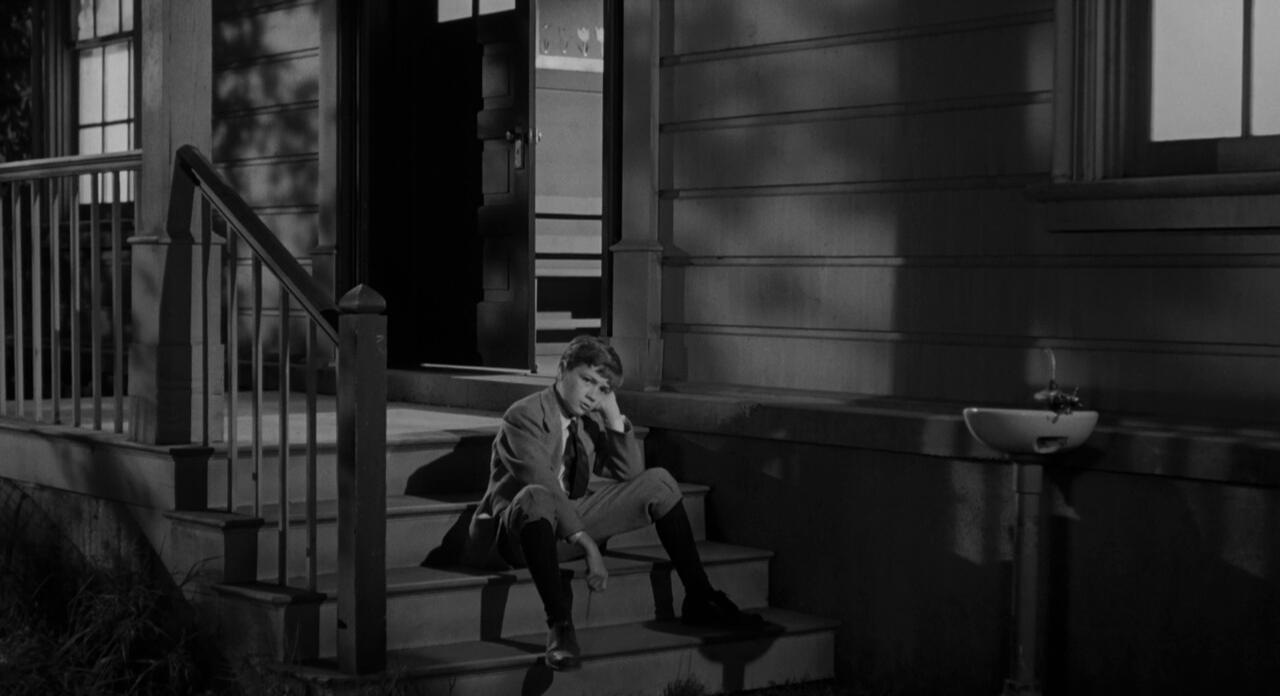
Inequality in Social Class
Beyond race, Lee also explores class divisions in Maycomb. The town’s social structure is rigid. Citizens are divided by both race and economic status, with family reputation having a large sway over the townsfolk's overall opinion of a person.
The Finches are generally in a respected position because they are white and financially stable.
Families like the Cunninghams and Ewells represent different layers of poverty and pride. The Cunninghams are white, poor, honest, and generally nice, while the Ewells are white, poor, dishonest, and seen as “white trash.” Lee contrasts them to show that morality is not determined by wealth.
The Cunninghams are trusted and more highly respected than the Ewells because of their honesty. However, even the Ewells are more trusted than a kind, honest Black man, just because of race.
These class distinctions mirror the larger racial divisions in the town and in society. Both systems rely on an unfair hierarchy of exclusion and judgment.
The Great Gatsby also examines the role of different social classes.
Symbols in To Kill a Mockingbird
Though symbolism is not the main focus in this novel the way it is in other literary works, they are still important. Understanding the symbolism helps the reader gain deeper insight and discover new ideas brought forth in the narrative. Here are some of the most important symbols to know in the novel.
The Mockingbird
The mockingbird is the novel’s central symbol, representing innocence and harmlessness. A neighbor tells the children,
Mockingbirds don’t do one thing but . . . sing their hearts out for us. That’s why it’s a sin to kill a mockingbird.
Miss Maudie
The mockingbird represents those who bring goodness into the world but are easily destroyed by evil (cruelty and prejudice, in this case). Tom Robinson and Boo Radley both embody this symbol. They are innocent individuals who suffer because others cannot see their humanity.
The bird is weak, but that doesn’t mean it’s right to crush it. In the same way, these characters are vulnerable, but that doesn’t mean it’s right for the townspeople to be cruel to them.
The Rabid Dog
The mad dog that Atticus shoots in the street symbolizes the irrational fear and hatred that infects Maycomb. Just as the disease spreads uncontrollably, so does prejudice.
Atticus’s calm, decisive act of shooting the dog mirrors his moral courage in confronting racism during the trial. It also shows that confronting evil often requires level-headed strength rather than aggression. He knows how to deal with the situation and takes decisive action rather than crumbling in its face, which would leave him vulnerable to attack and infection, too.
To Kill a Mockingbird Quiz
When learning about this iconic literary work in English class, you need to know the basics. Here are some of the most important questions to know when studying Harper Lee’s famous novel. Test your knowledge!















